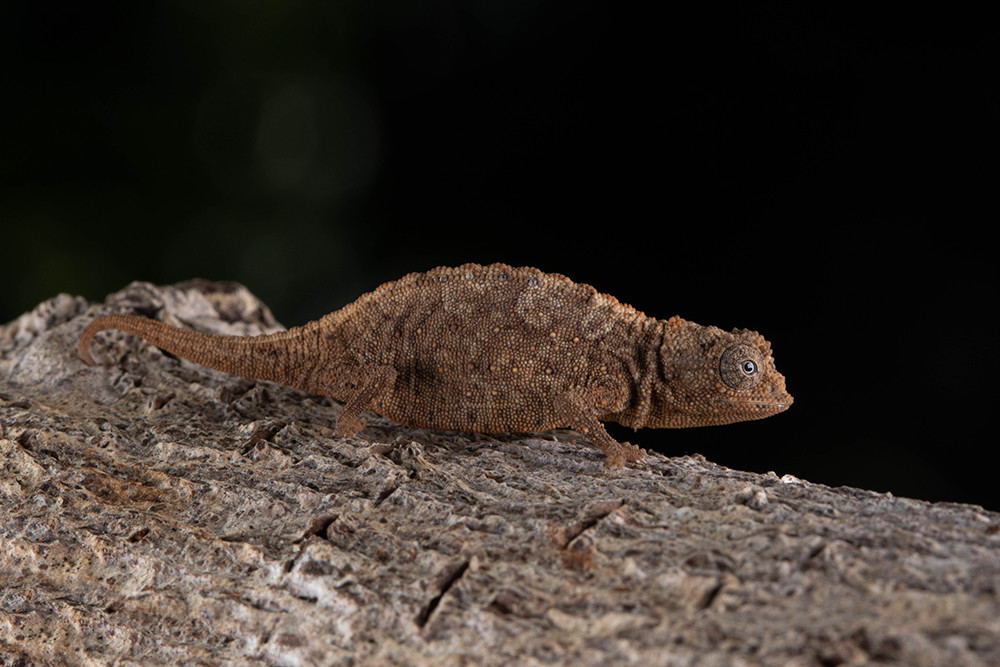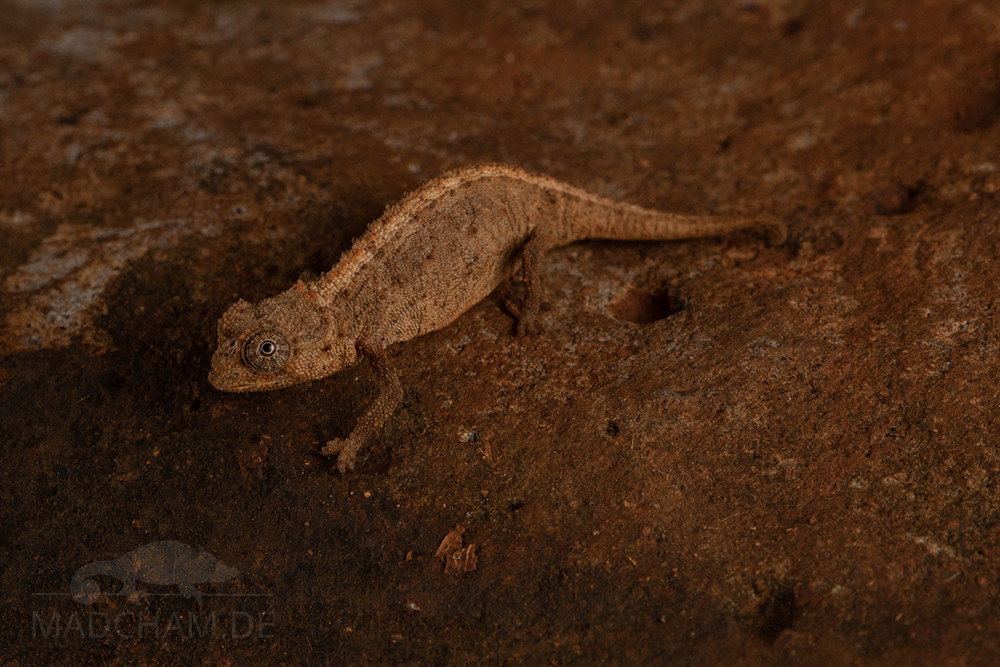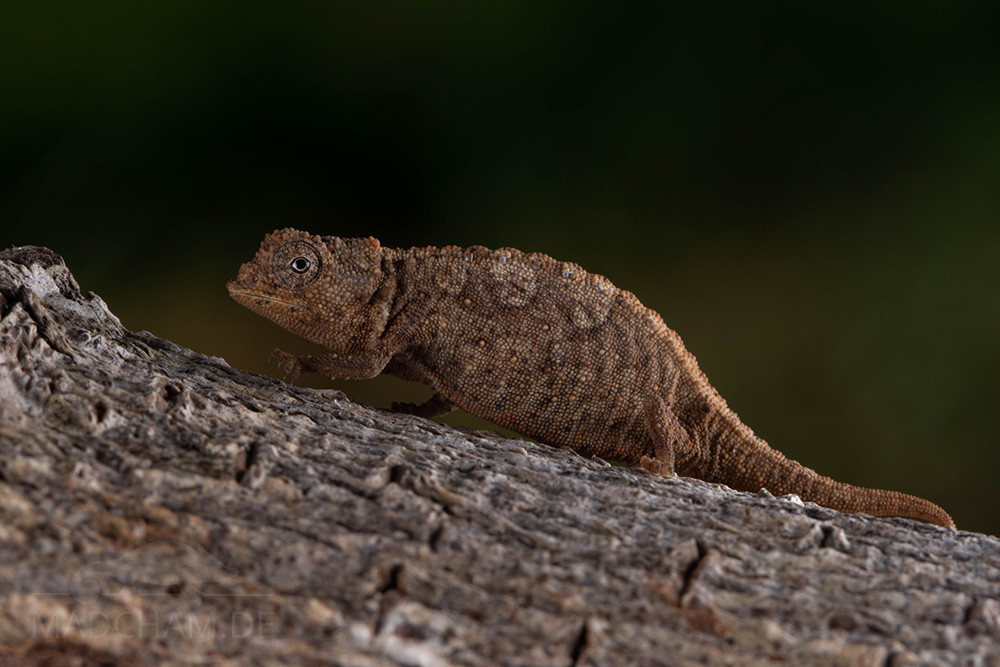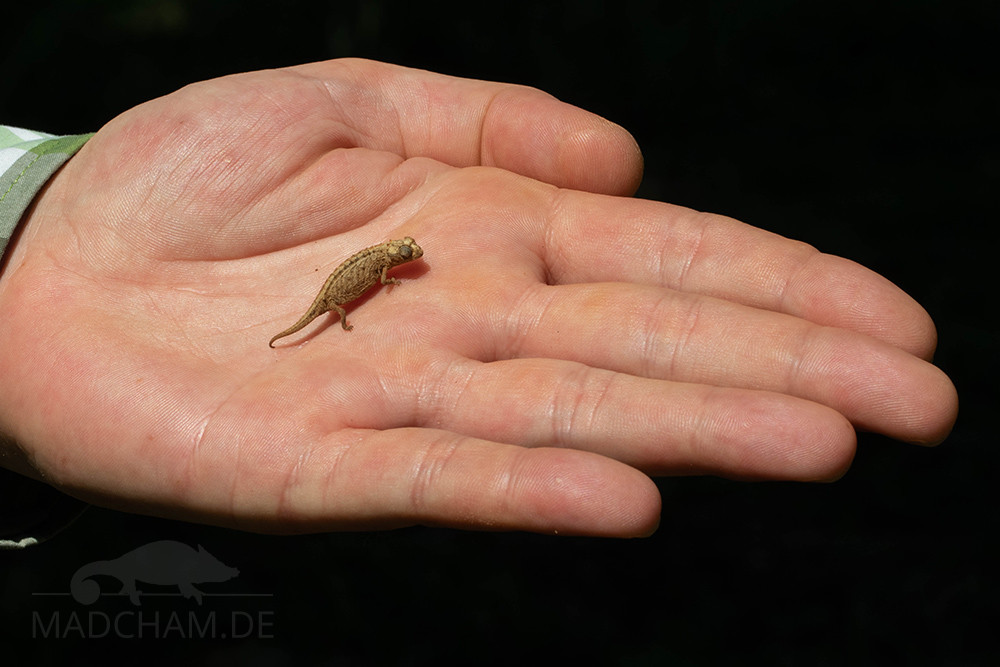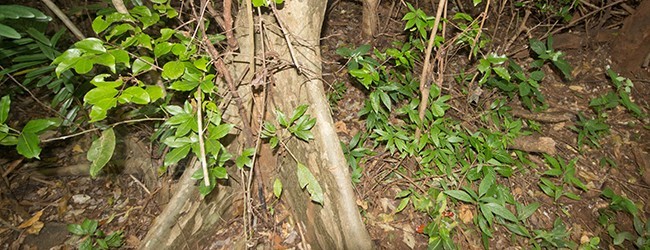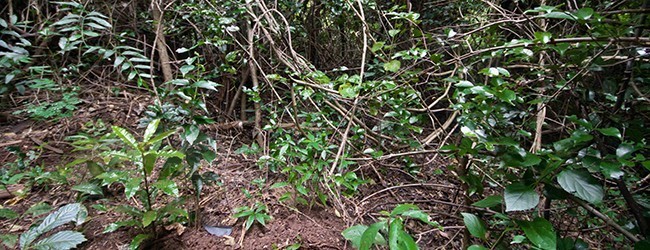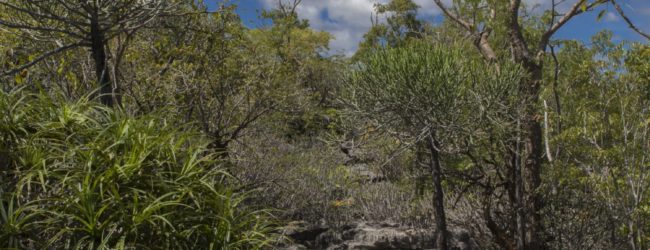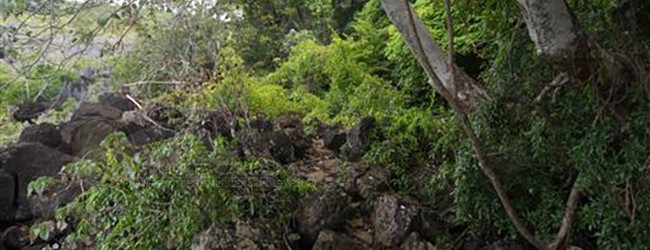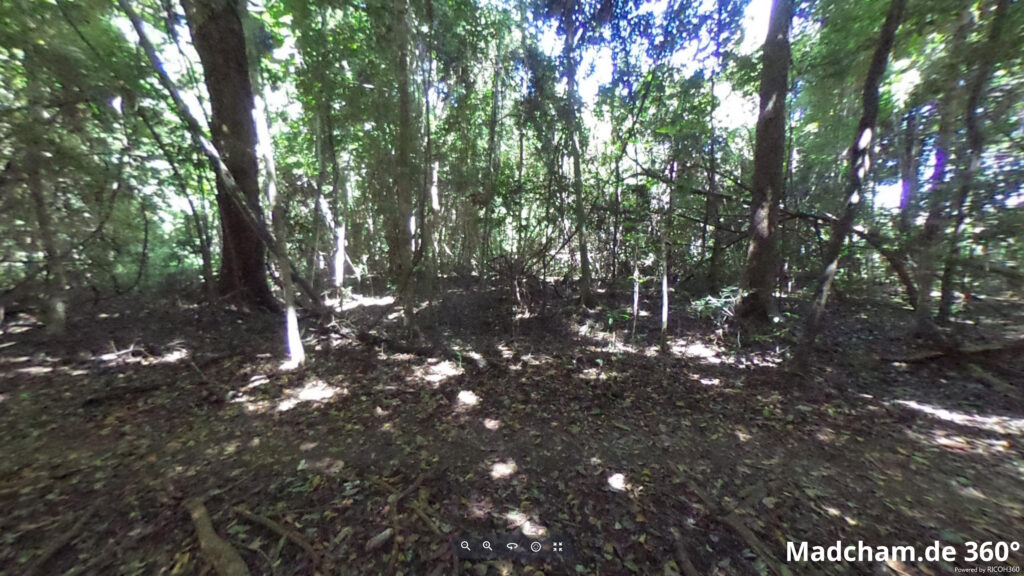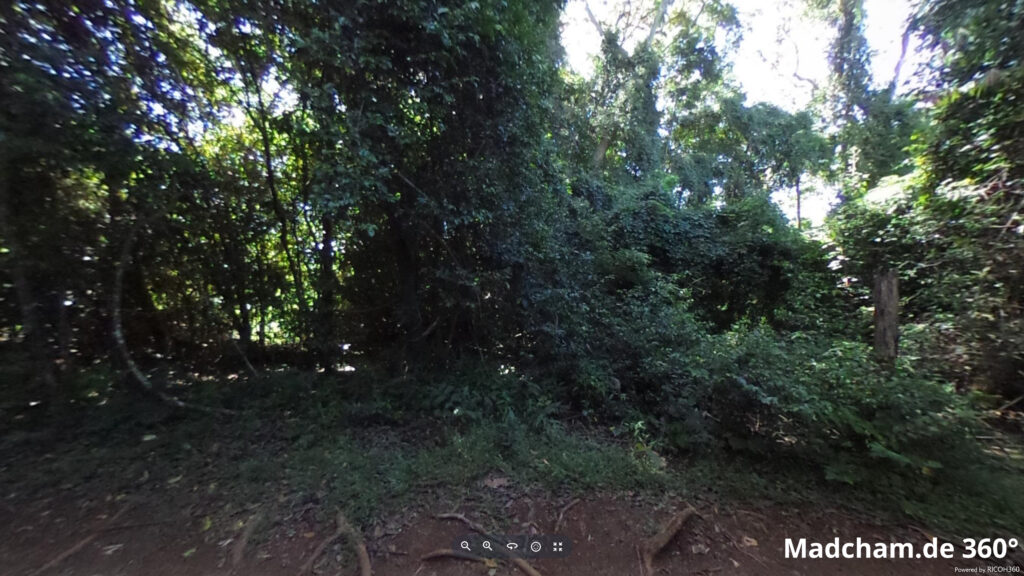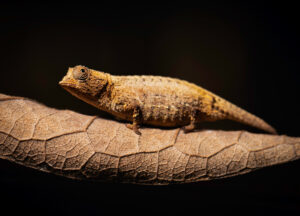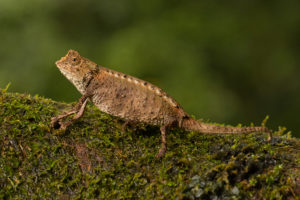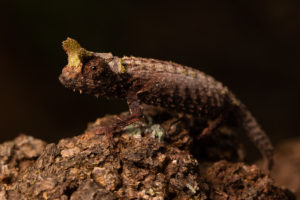no legal export possible
First description: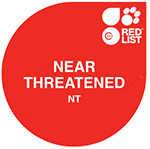
Glaw, Köhler, Townsend, Vences 2012 ![]()
Origin of the species name:
Frank Glaw of the Zoologic State Collection Munich (Germany), Jörn Köhler of the Hessian State Museum Darmstadt (Germany), Ted Townsend of the University of San Diego (USA) and Miguel Vences of the Zoological Institute of the TU Braunschweig (Germany) described the species Brookesia confidens at the same time as several other similarly small Brookesia species. In contrast to the other species, Brookesia confidens occurs in a protected national park, which offers additional protection by the difficult to access Tsingys. It is therefore rather unlikely that the habitat of the species will be completely destroyed in the next few years. Instead, the biologists hope that the species will survive. Appropriately, the first descriptors chose the Latin word confidens, which translated means confident or trustfully, as the species name.
Distribution:
Brookesia confidens is so far only known from the Ankarana National Park. The small chameleons live in the dry forest, partly also near the Tsingys, a kind of needle-shaped karst rock. They are best found in a somewhat more humid part of the dry forest, which remains relatively green even during the dry season. They live in the thick layer of leaves at the foot of large tree roots and sleep at night on blades of grass or very low, thin plants.
Appearance and size:
Like all chameleons of the minima group, Brookesia confidens is a real midget. The snout-vent-length (measured from the tip of the nose to the cloaca) is a maximum of 2.3 cm. On the back, Brookesia confidens carry 11 or 12 small, rather indistinctly visible tubercles. Most individuals of the species wear a light stripe on the back, which continues on the tail.
| Jan | Feb | Mar | Apr | May | Jun | Jul | Aug | Sep | Oct | Nov | Dec | |
| Average temperature | 25 | 25 | 24 | 23 | 20 | 19 | 18 | 19 | 20 | 22 | 23 | 24 |
| Minimum temperature | 21 | 20 | 20 | 19 | 16 | 14 | 14 | 14 | 15 | 17 | 19 | 20 |
| Maximum temperature | 30 | 29 | 28 | 27 | 26 | 24 | 23 | 24 | 25 | 27 | 28 | 29 |
| Rain days | 26 | 24 | 21 | 12 | 8 | 7 | 9 | 9 | 7 | 9 | 13 | 20 |
We have collected the data given above over several years with thermometers and hygrometers at the finding places of the chameleons. "Average temperature" means that values of a whole month have been calculated to one average value per month. For example all measured minimum temperature values of February have been calculated to one average minimum temperature for February. In plain language, this means single peak values of a day may be a little higher or lower than the average minimum and maximum temperatures. It is possible that a location has an average maximum temperature of 29°C, but one day during that month it had 33°C or even 35°C there.
Ankarana is a dry forest divided in two halfs by the famous Tsingys, needle stone rocks. Inside the dry forest, it is very warm during daytime all year long. During rainy season from October to April, temperatures above 30°C are rather usual and it often rains.
During dry season from May to September days are a little cooler, but still very warm. At night, temperatures don't really drop in rainy season, but in dry season temperatures drop to 15°C at night. Dry season, by the way, means really dry in Ankarana: The major part of the trees looses its leaves and there is few precipitation only every couple of days. The rivers that have been torrentially in rainy season, dry up completely only leaving the bare stony river beds.
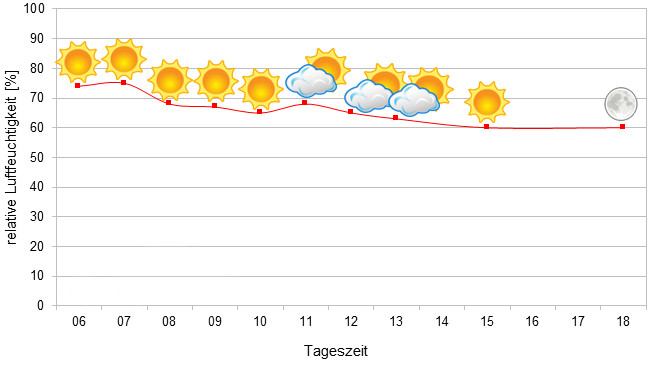
We have measured UVB data with a Solarmeter 6.5 in spring (beginning of April) at the peak of activity of chameleons in Madagascar. We always measured the values that a chameleon could maximally reach in its habitat.
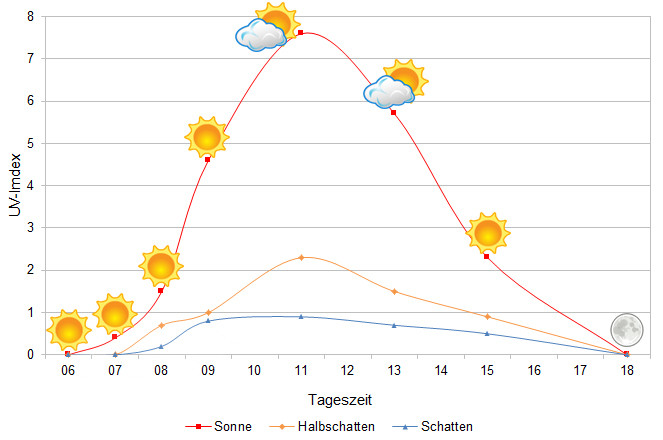
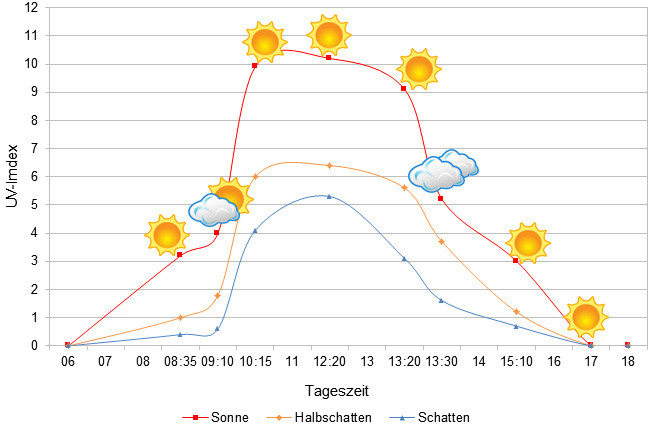
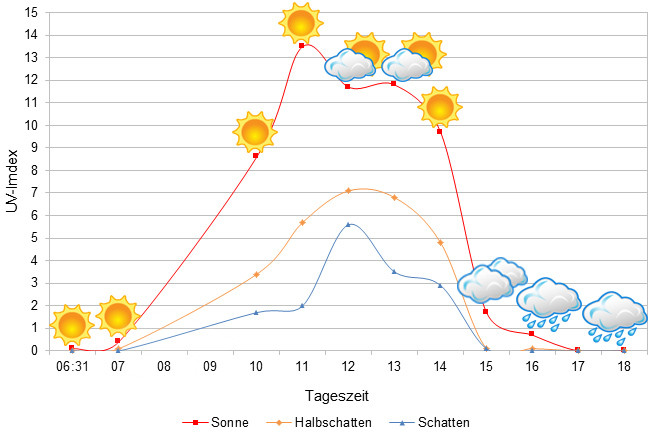
Since 2022, in addition to other climate data, we have also been measuring air pressure at the locations we visit in Madagascar. The following data is from a day during the rainy season. On the X-axis is the time of day or night. In Madagascar, the day begins around 6 am, and night falls as early as 6 pm. The Y-axis shows the atmospheric pressure in hPa.
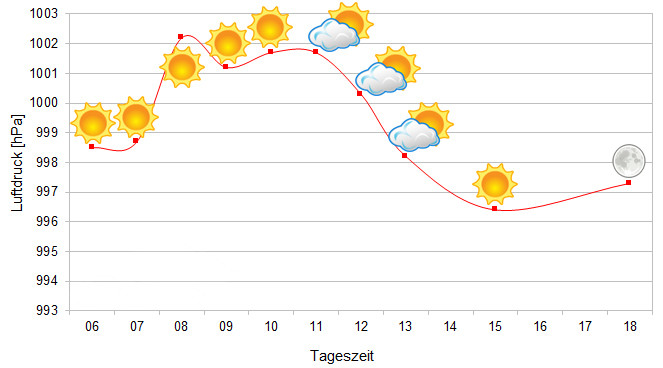
Habitat:
The following photos show parts of the habitat of Brookesia confidens during the rainy season in Ankarana. The microhabitat of the species is located in the dry forest on only a small, somewhat more humid area with high foliage, many small shrubs and very large tree roots. Directly at the Tsingys the animals are rarely found.
Below you will find some 360° pictures from the dry forest of Ankarana, which we took during the rainy season. If you click on the respective image, the pictures will open in an enlarged view in a separate window. You can use the mouse to rotate in all directions. You also have the option of running the images in full-screen mode. Have fun looking at them!

